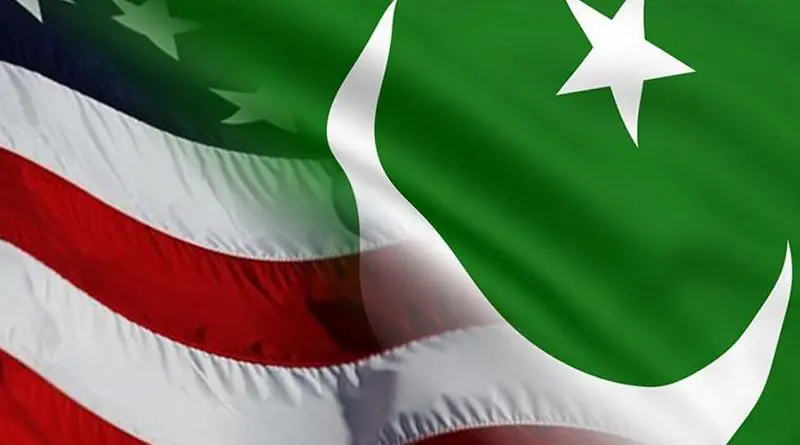Will The US’ Pressure On Pakistan Deliver Results? – Analysis
By IPCS
By Shalini Chawla*
The US-Pakistan relationship has been strained over the last six years. It took an unyielding shift with the announcement of US President Donald Trump’s Afghanistan policy, which comprises four pillars and also touches upon Washington’s dealings with Islamabad. Trump’s announcement carried a firm message for Pakistan. While Trump acknowledged that “Pakistan has been a valued partner,” he excoriated Pakistan for harboring criminals and terrorists. Washington has been quite unhappy with Islamabad’s support to the Taliban and the Haqqani Network, who have been targeting US soldiers in Afghanistan.
Islamabad has received lavish financial and military assistance from the US, amounting to approximately $33 billion between 2002 and 2017. However, there has been a steady decline in US aid post the 2011 killing of al Qaeda Chief Osama bin Laden killing, which convinced a majority of Americans that Islamabad was not sincere in its efforts to counter terrorism. Taking a taut stance, Washington has slashed its foreign military financing (FMF) to Pakistan from US$ 255 million to US$ 100 million for the 2018 fiscal. The new US policy is likely to further impact US assistance. The likely US responses being discussed at present include expanding US drone strikes and eventually revoking Pakistan’s status as a major non-NATO ally.
Washington has blatantly warned Pakistan against its actions of supporting terror to serve its strategic objectives, but what has probably hit Islamabad more is that Trump’s policy supports New Delhi’s extended role in Afghanistan. The Pakistani leadership and media have reacted strongly to the US position and have been upset about the US not recognising Pakistan’s counter-terrorism efforts. Pakistan has been extremely agitated with the growing US-India ties, Washington’s support to India in Afghanistan, and its support to India’s position on the China-Pakistan Economic Corridor (CPEC). Washington has questioned the legitimacy of the CPEC, which passes through a disputed territory.
Pakistan has always welcomed the US’ financial and military assistance as – with its singular focus on its disputes and problems with New Delhi – it has looked towards US for modern defence equipment to counter India’s military modernisation. On the other hand, the US’ alliance and interests have been shaped primarily by Pakistan’s geographical location and (over the last 18 years) its expanding nuclear arsenal. Post 9/11, the alliance, which was rather timely for Pakistan’s dwindling economy, allowed Islamabad to swing a substantive amount of US aid and desired military equipment (including F-16s) in the last 16 years.
In response to the US’ decision of slashing military aid, Pakistan’s Prime Minister Shahid Khaqan Abbasi claimed that it is no more reliant on US military equipment as it has managed to diversify its sources of weapons supply. Pakistan’s military inventory includes systems from China (significant portions), Europe and now, also Russia. Although the growing Sino-Pak alliance has invariably added to Pakistan’s confidence and reduced its reliance on US equipment, Pakistan’s military is irked about losing its major non-NATO ally status which allows it to be a recipient of Excess Defence Articles (EDA), speedy arms sales process, and access to a US loan guarantee program.
The relationship with the US continues to be critical for Pakistan because it its largest export destination country; a source of foreign remittance; and one of its top sources for Foreign Direct Investment. Moreover, the US has a dominant influence in international financial organisations such as the International Monetary Fund and the World Bank. On the other hand, Pakistan’s external debt is estimated to grow to US$ 110 billion in four years, which is likely to force Islamabad to go back to the IMF in the future.
Amidst the stressed US-Pakistan situation, in a positive move, Pakistan forces rescued an US-Canadian couple and their three children, who had been abducted in 2012 and held hostage by the Haqqani Network. The US appreciated the effort and this might provide a short term opening for engagement between the two countries. Enough instances in the past have shown that whenever the US’ threshold of patience is about to be breached, Pakistan’s military has tried to pacify the situation. The rescue operation of the US-Canadian couple appears to be a step to appease the US administration. The Pakistani military’s ability to counter the terror network cannot be questioned and it has been very proud of its counter-terrorism operations, but it is the will of the military which is under question.
The US’ positioning might help in the short term to see some change in Pakistan’s military’s behavior but the bigger question remains – is Pakistan truly willing to alter its strategic calculus?
Islamabad’s deep strategic interests in Afghanistan – that have caused it to seek control of Kabul with an objective to counter Indian presence; deal with the lingering border issue with Afghanistan; and control Pashtun nationalism on its tribal borders – are unlikely to change. If Pakistan wants to establish its credibility as a responsible state and wants recognition from the US for its counter-terrorism efforts and sacrifices, it needs to be consistent in fighting militants without making a distinction between ‘good terrorists’ and ‘bad terrorists’.
* Shalini Chawla
Senior Fellow, Centre for Air Power Studies (CAPS), and Head, Pakistan and Afghanistan Studies Project, CAPS

